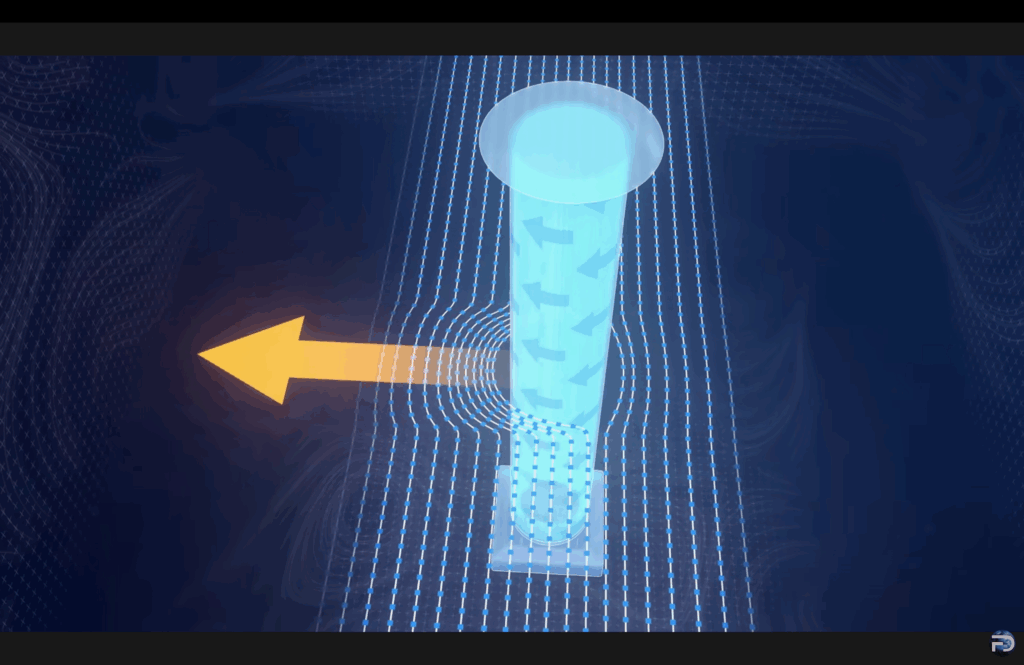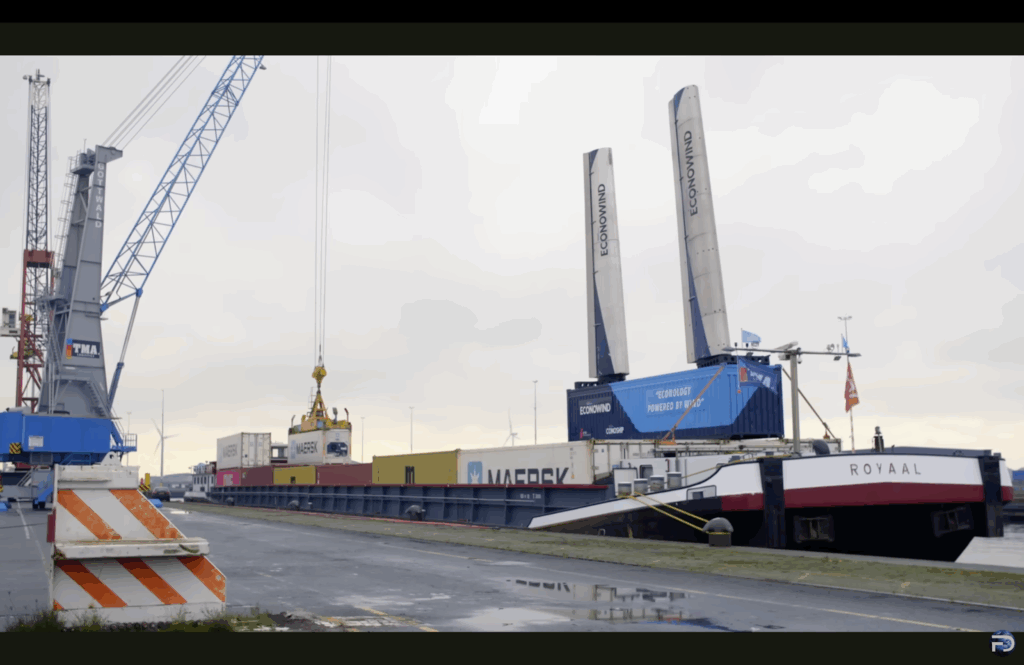Climate change and modern technology are bringing global trade back to its roots
Sailing and civilization go hand in hand. For thousands of years, humans have used sailing to transport themselves, livestock, and—most importantly—cargo across the water (1). Yet when the Industrial Revolution made coal (and eventually oil) widely available, trade by sail disappeared as steam-powered and diesel ships took over (2). Today, as climate change worsens and more people recognize the ecological hazards posed by oil-powered shipping, a shift back to the days of canvas and rope has begun—but with a modern twist.
Global trade is huge. Since the end of WWII and the introduction of shipping containers in the 1950s, the world has experienced sea-based interconnectedness like never before (3). Everything ranging from children’s toys to shirts to cars can be cheaply imported and exported on container ships that carry upwards of 20,000 containers each (4). Oil and natural gas tankers shunt around vast quantities of energy resources, while bulk carriers bring raw metal and food to every country on Earth. A vast web of trading routes now links the entire world.
While this ease of trade has brought countries closer together and boosted the world economy, it has also created a deep reliance on maritime shipping: in 2021, 80% of the world’s international trade traveled by water (5). This industry is inseparable from the modern world for good reason. However, it produces 3% of global greenhouse gas emissions—more than the whole country of Japan. It also creates a significant portion of the world’s toxic pollutants, such as sulfur and nitrogen dioxide (6). For the sake of a greener future, something has to change.
The main issue with global trade lies with its fuel. Bulk shipping burns a type of fuel known as Heavy Fuel Oil (HFO): a tar-like byproduct of the petroleum refining process (7). Because HFO is an “impure” byproduct, it contains numerous pollutants, such as sulfur, nitrogen, and vanadium, which produce toxic gases when the fuel burns (8). The emissions from HFO are so damaging that ships have to switch to diesel, a less toxic but more expensive fuel, when they approach cities (9). Given both the long-term climate risks and short-term toxicity of HFO, shipping companies have started to look for alternatives to their oil-guzzling ships. While some hope to make fuel more efficient, another group aims for something entirely different: a return to sailing.
Well, not quite. These “sails” look nothing like the billowing canvas sheets of old. But because they take advantage of our modern understanding of air physics and airplane wings, these new forms of wind-based propulsion provide vastly more power than their ancient counterparts. Two main concepts—the Flettner rotor and the turbosail—are now being put into use.
Enter the Flettner rotor. Flettner rotors look like huge metal pillars jutting up from a ship. By rotating the entire pillar at high speed, Flettner rotors use a phenomenon known as the Magnus effect to produce forward force. If you’ve ever played sports with a round ball, you’ve met the Magnus effect—it causes the curving motion that happens when the ball is spun. One side of the object rotates in the direction of incoming air, speeding it up, while the other side slows the incoming air down with its rotation. The slower air builds up more than the faster air, creating a region of high pressure that pushes the object. Anemoi, a leading company in the testing and installation of Flettner rotors, estimates that Flettner rotors can reduce a ship’s emissions by 5-30%, which would save millions of dollars and thousands of tons of HFO in the long term (10).

The Magnus Effect working on a Flettner rotor. The rotor’s spin causes a region of low-pressure (left) air and a region of high-pressure (right) air. This pressure difference creates force (a).
But what about using an airplane wing as a sail? This is the concept behind the turbosail. Airplane wings work by creating a zone of high-pressure air under the wing and a zone of low-pressure air above the wing—similar to a Flettner rotor—which then pulls the wing upward. By mounting these wings vertically on the deck, ships can take advantage of incoming wind to pull themselves forward. Turbosails take this idea one step further by using a propeller within the wing to accentuate the difference in air pressure between the two sides. For this reason, turbosails can produce four times more force than a conventional sail of their size (10). Econowind, the main company building turbosails, has devised a system to mount these wings in shipping containers so that ships can achieve up to a 60% reduction in HFO usage (10, 11).

Turbosails mounted on a cargo ship (a).
These new sails hold immense promise, but they cannot do the job alone. Global shipping will require other technologies, such as lightweight conventional sails, high-altitude kites, and greener fuels to augment Flettner rotors and turbosails. Furthermore, ships with powerful central AI will be needed to manage these networks of complex, interlocking technologies. Just as sailors adjust their sails every minute of the day, so too will AI have to swivel the turbosails, deploy the kites, and spin the Flettner rotors to keep up with changing conditions (10). A transition to cleaner trade will be lengthy, and it may require a wholesale shift towards a slower and lower-volume maritime world. But with the winds backing us and the seas wide open, we’ll find our way there.
Images
Sources
- Cemal, P. (1998). The Uluburun shipwreck: an overview. International Journal of Nautical Archaeology. 27(3), 188-224.
- Becker, L. (2025, December 27). The Age of Steamships: Revolutionizing Global Trade and Ocean Travel. Seafaring History. https://seafaringhistory.com/the-age-of-steamships-transforming-oceanic-travel-and-trade/
- Levinson, M. (2006). The Box: How the Shipping Container Made the World Smaller and the World Economy Bigger. Princeton University Press. https://archive.org/details/boxhowshippin00levi
- Peters, A. (2024, September 6). The world’s largest wind-powered cargo ship just made its first delivery across the Atlantic. Fast Company. https://www.fastcompany.com/91185144/the-worlds-largest-wind-powered-cargo-ship-just-made-its-first-delivery-across-the-atlantic
- United Nations Conference on Trade and Development. (2021). Review of Maritime Transport 2021. United Nations. https://unctad.org/publication/review-maritime-transport-2021#:~:text=Over%2080%25%20of%20the%20volume,higher%20for%20most%20developing%20countries.
- United States Department of Energy. (n.d.). Maritime Decarbonization. United States of America. https://www.energy.gov/eere/maritime-decarbonization#:~:text=Ports%20and%20ships%20need%20vast,exhaust%20treatment%20and%20carbon%20capture.
- Huth, M., Helios, A. (2013). 14 – Fuel flexibility in gas turbine systems: impact on burner design and performance. Modern Gas Turbine Systems. N/A(N/A), 635-684. https://www.sciencedirect.com/science/article/abs/pii/B9781845697280500148
- Bengtsson, S., Andersson, K., Fridell, E. (2011). A comparative life cycle assessment of marine fuels: liquefied natural gas and three other fossil fuels. Proceedings of the Institution of Mechanical Engineers, Part M: Journal of Engineering for the Maritime Environment. 225(2), 97-110. https://journals.sagepub.com/doi/10.1177/1475090211402136
- Streibel, T., Schnelle-Kreis, J., Czech, H. et al. (2017). Aerosol emissions of a ship diesel engine operated with diesel fuel or heavy fuel oil. Environ Sci Pollut Res(24), 10976–10991. https://doi.org/10.1007/s11356-016-6724-z
- Free Documentary – Engineering. (2024, August 4). Ships of the Future: The Coming Revolution in the Shipping Industry | FD Engineering. YouTube. https://www.youtube.com/watch?v=-v6wTuJFmPY
- N/A. (2025). Econowind. Econowind. https://econowind.nl/











Comments are closed.